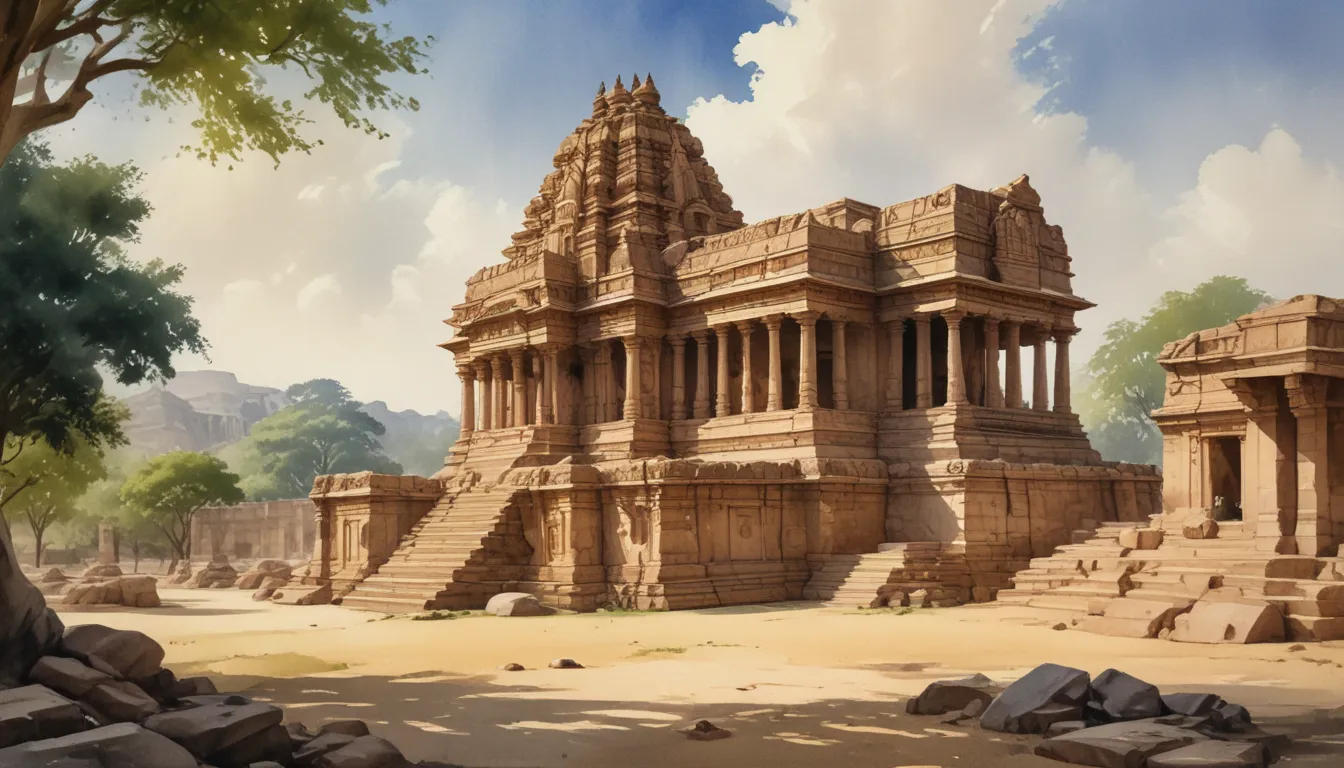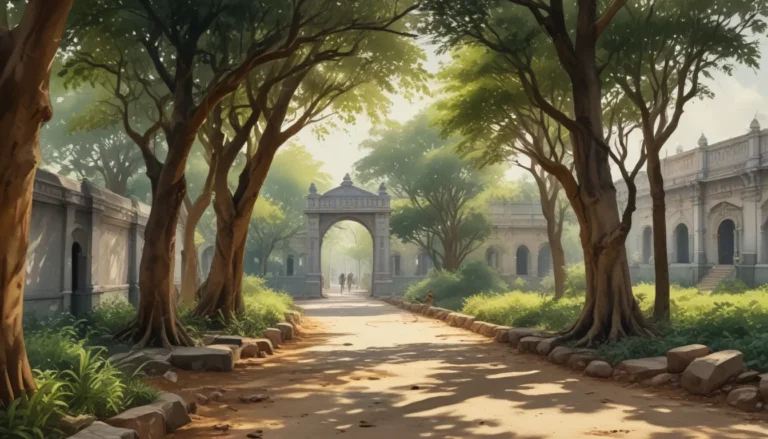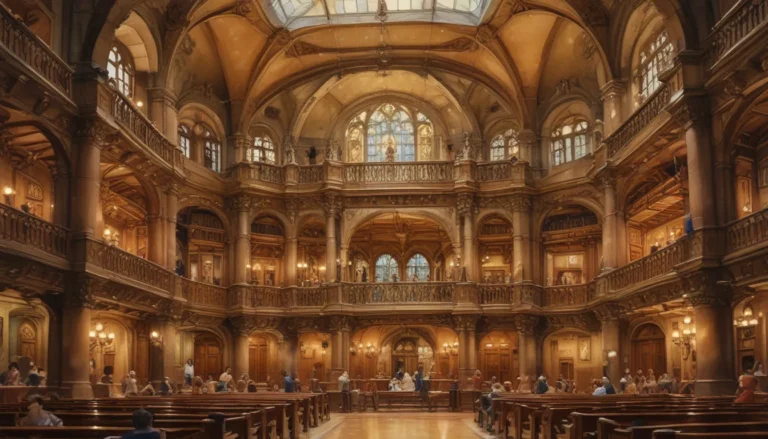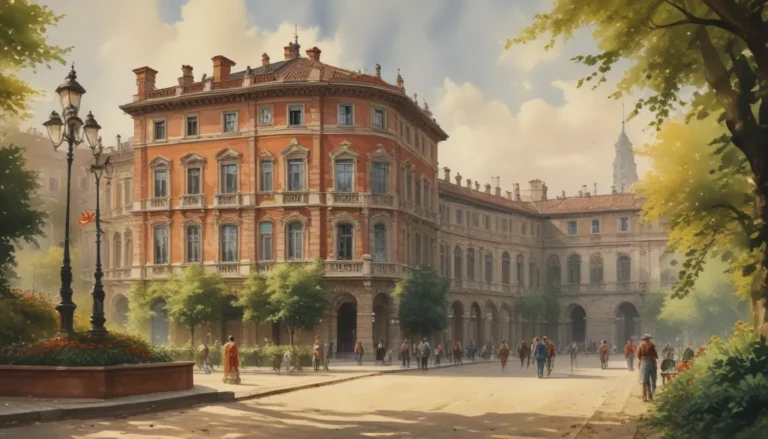The images in our articles are for illustrative purposes only and may not exactly match the content. They are intended to capture your interest and complement the text, not to replace it.
Welcome to the enchanting world of Vittala Temple in Hampi, Karnataka, where history and architectural marvels intertwine to create a mesmerizing destination for both tourists and devotees. Steeped in mythological tales and adorned with intricate carvings, this ancient temple dedicated to Lord Vittala is a testament to the artistic and engineering prowess of the Vijayanagara Empire. Join us as we uncover fourteen captivating facts about Vittala Temple that showcase its significance and unique features, inviting you on a journey through time to explore the mysteries and allure of this remarkable architectural marvel.
Discovering the Magnificence of Vittala Temple
At the heart of Vittala Temple lies an architectural marvel that has captivated the hearts of visitors for centuries. The exquisite carvings and intricate design of this temple, dedicated to Lord Vittala, an incarnation of Lord Vishnu, make it a popular pilgrimage site and a must-visit UNESCO World Heritage Site.
A Glimpse into History: The Construction of Vittala Temple
Built during the 15th century under the reign of the Vijayanagara Empire, Vittala Temple stands tall as a symbol of architectural brilliance and artistic finesse. Its rich history and cultural heritage serve as a window to the past, offering a glimpse into a bygone era of grandeur and magnificence.
The Iconic Stone Chariot: A Symbol of Hampi
One of the most fascinating features of Vittala Temple is its iconic stone chariot, reminiscent of ancient times. Intricately carved and artistically designed, this stone chariot stands as a symbol of the Vijayanagara Empire’s grandeur and architectural prowess.
Musical Marvels: The Enchanting Musical Pillars of Vittala Temple
Step into the mesmerizing world of Vittala Temple’s musical pillars, where tapping gently produces distinct musical notes that create a harmonious symphony echoing through the temple complex. A testament to ancient craftsmanship and ingenuity, these pillars add a touch of magic to the temple’s aura.
Ranga Mantapa: The Pillared Hall of Musical and Dance Performances
Experience the rich cultural tapestry of Vittala Temple at the Ranga Mantapa, a pillared hall where musical and dance performances once thrived. The hall’s design and acoustics are nothing short of remarkable, offering a glimpse into the vibrant artistic scene of ancient times.
Lord Narasimha: The Grand Sculpture Within
Venture inside Vittala Temple to witness the grandeur of a monumental sculpture depicting Lord Narasimha, the half-man, half-lion incarnation of Lord Vishnu. Crafted with exquisite detail and reverence, this sculpture is a sight to behold and a symbol of divine grace.
Artistry in Stone: The Intricate Carvings of Vittala Temple
Adorned with intricate carvings depicting mythological tales, gods, and goddesses, Vittala Temple’s walls and pillars are a visual delight. These masterful carvings showcase the unparalleled skills of artisans from a bygone era, leaving visitors in awe of their craftsmanship.
Shrine of Blessings: The Unique Stone Chariot-Shaped Shrine
In addition to the iconic stone chariot, Vittala Temple houses a smaller stone chariot-shaped shrine within its premises. A popular spot for devotees seeking blessings and divine grace, this shrine exudes a sense of serenity and spiritual reverence.
Lokapavani: The Sacred Temple Tank
Adjacent to Vittala Temple lies Lokapavani, a sacred pushkarini or temple tank believed to hold holy waters. Devotees consider it auspicious to take a dip in this sacred tank, seeking spiritual purification and blessings.
A Hub of Culture: Vittala Temple as a Cultural Center
Once a thriving cultural center during the Vijayanagara Empire, Vittala Temple played host to a variety of artistic performances, events, and festivals. Drawing crowds from far and wide, the temple was a beacon of art, culture, and intellectual gatherings.
The Saregama Pillar: A Musical Instrument in Stone
Delve into the world of musical marvels at Vittala Temple with the Saregama Pillar, a stone musical instrument that emits different musical notes when touched in various places. A unique creation that adds depth to the temple’s cultural heritage and artistic legacy.
Dravidian Splendor: The Architectural Style of Vittala Temple
Vittala Temple’s architecture showcases the intricate beauty of the Dravidian style, characterized by elaborate carvings, towering gopurams, and pillared halls. A fine example of this architectural tradition, the temple is a visual spectacle that reflects the artistic brilliance of its creators.
Divine Abode: The Sacred Idol of Lord Vittala
Central to Vittala Temple is the main sanctum housing a sacred idol of Lord Vittala, inviting devotees to offer prayers and seek blessings. A place of spiritual solace and divine grace, the sanctum emanates a sense of peace and reverence.
A World Heritage Treasure: Vittala Temple as a UNESCO Site
Recognized for its historical and architectural significance, Vittala Temple, along with the Hampi ruins, has been designated as a UNESCO World Heritage Site. Drawing visitors from around the globe, the temple stands as a testament to India’s rich cultural heritage and architectural legacy.
Unveiling the Mystique of Vittala Temple: A Journey Through Time
As we conclude our exploration of Vittala Temple’s captivating facts, we invite you to immerse yourself in the divine aura and enchanting beauty of this ancient landmark. From the iconic stone chariot to the mystical musical pillars, every corner of Vittala Temple holds a story waiting to be discovered, beckoning you to unravel the secrets of this historical and architectural wonder.
FAQs: Your Guide to Vittala Temple
-
When was Vittala Temple built?
Vittala Temple was constructed in the 15th century during the reign of the Vijayanagara Empire. -
What does the stone chariot symbolize in Vittala Temple?
The stone chariot in Vittala Temple is a symbol of the Vijayanagara Empire’s grandeur and architectural prowess, representing the mythical vehicle of Lord Vishnu. -
Are the musical pillars functional in Vittala Temple?
While the musical pillars in Vittala Temple are no longer functional, they offer a unique acoustic experience when tapped gently. -
Is photography allowed inside Vittala Temple?
Yes, photography is permitted inside Vittala Temple, with visitors required to pay a nominal fee for the use of cameras or photographic equipment. -
Can visitors participate in rituals at Vittala Temple?
Visitors are welcome to attend various rituals and ceremonies at Vittala Temple, with schedules available for planning purposes. -
Is there an entry fee to visit Vittala Temple?
Yes, there is a nominal entry fee for visitors to explore the wonders of Vittala Temple, with varying rates for Indian and foreign tourists. -
What are some nearby attractions to visit along with Vittala Temple?
Explore the treasures of Hampi with nearby attractions such as the Virupaksha Temple, Hampi Bazaar, Lotus Mahal, and Elephant Stables, offering a glimpse into the historical grandeur of the region.
Embark on a journey of discovery and wonder as you explore the captivating facts of Vittala Temple in Hampi, Karnataka. Immerse yourself in the architectural splendor and cultural heritage of this UNESCO World Heritage Site, where each corner holds a story waiting to be told. Step back in time and witness the magnificence of Vittala Temple, a place where history and artistry merge to create a truly enchanting experience for all who visit.






